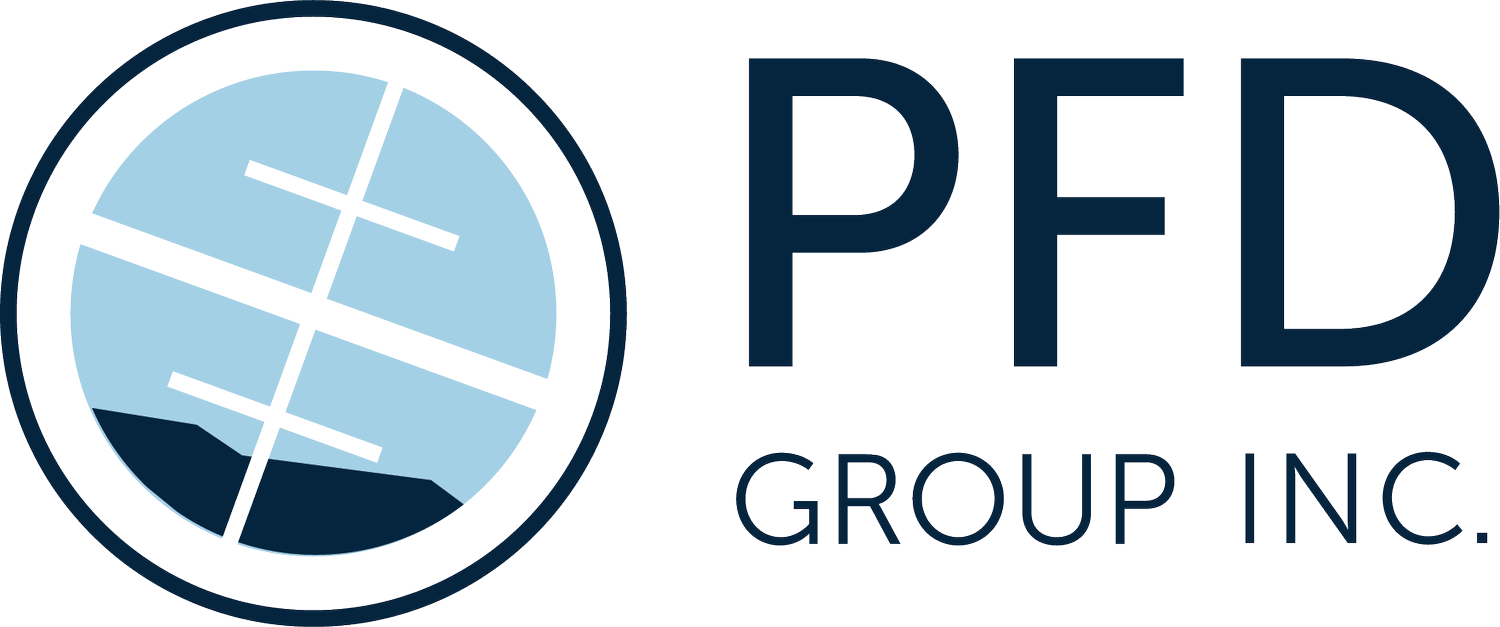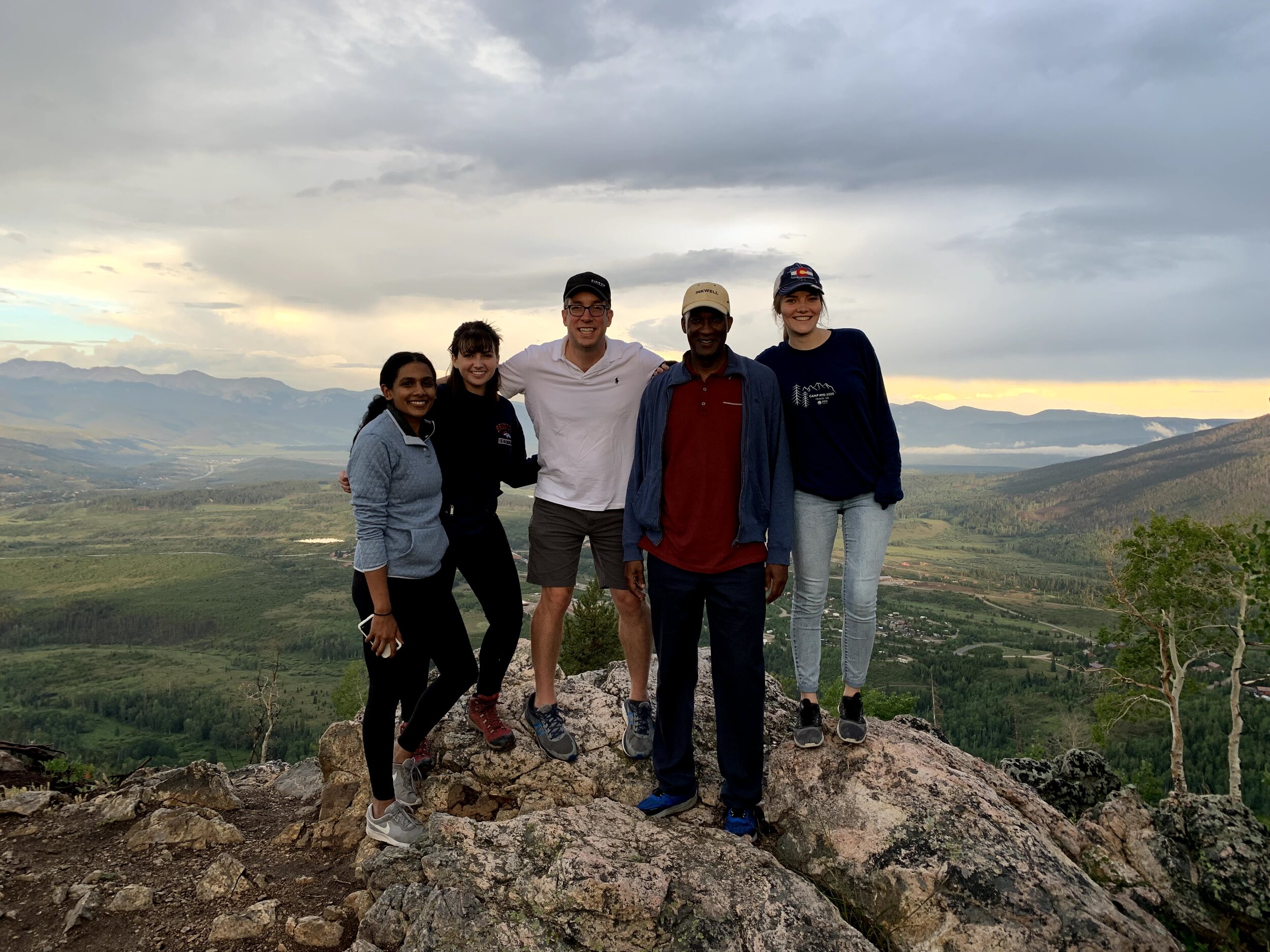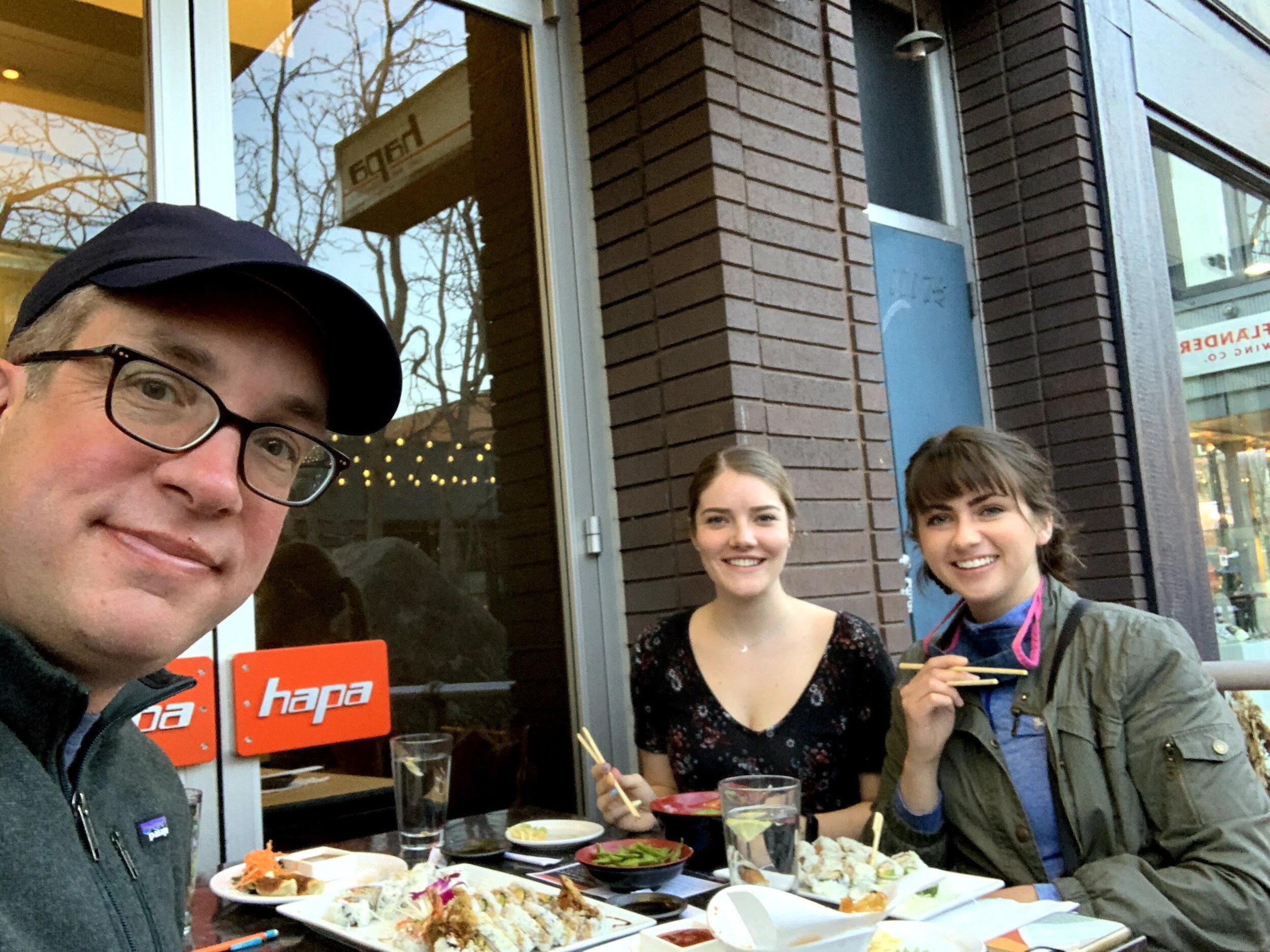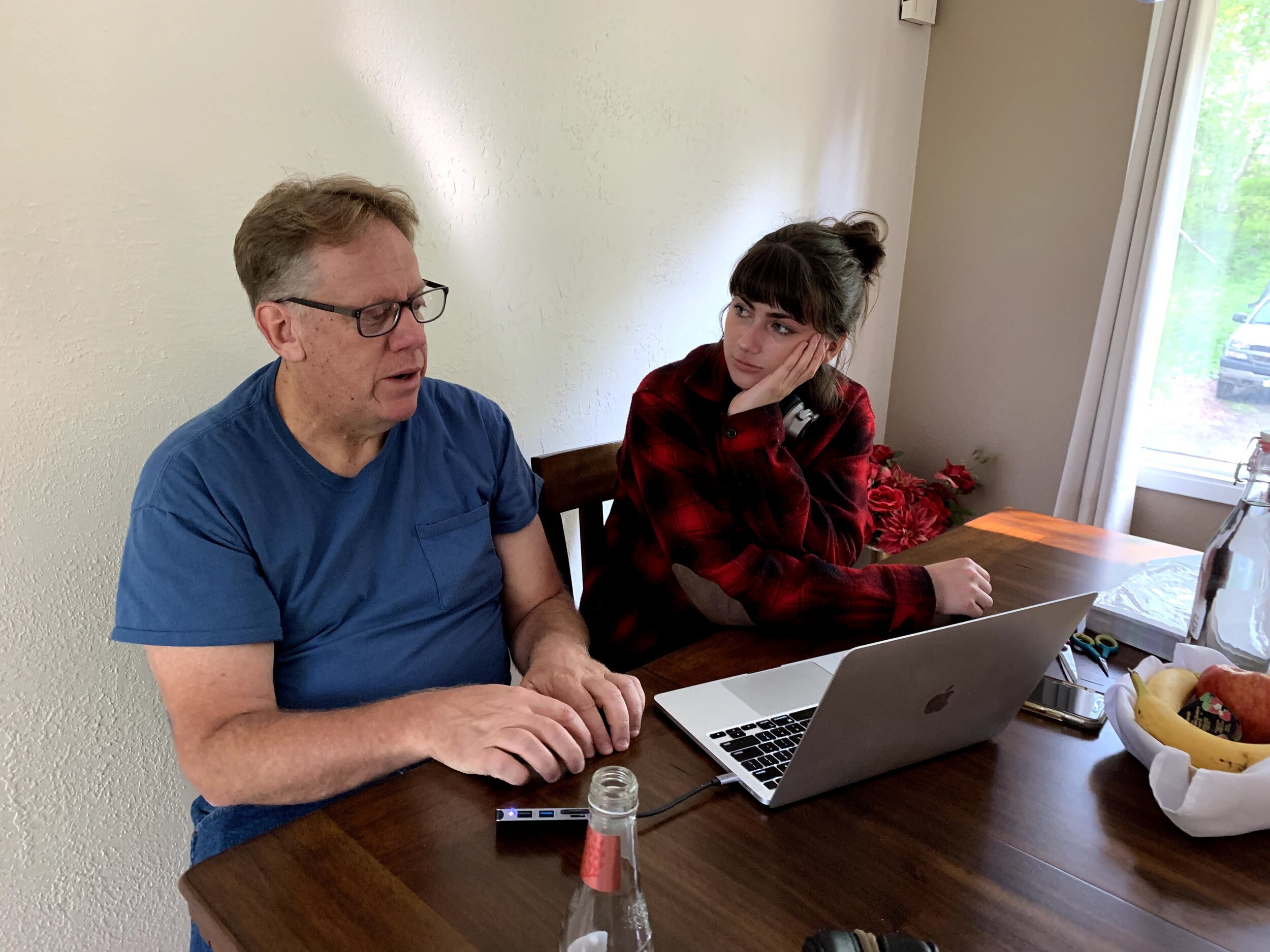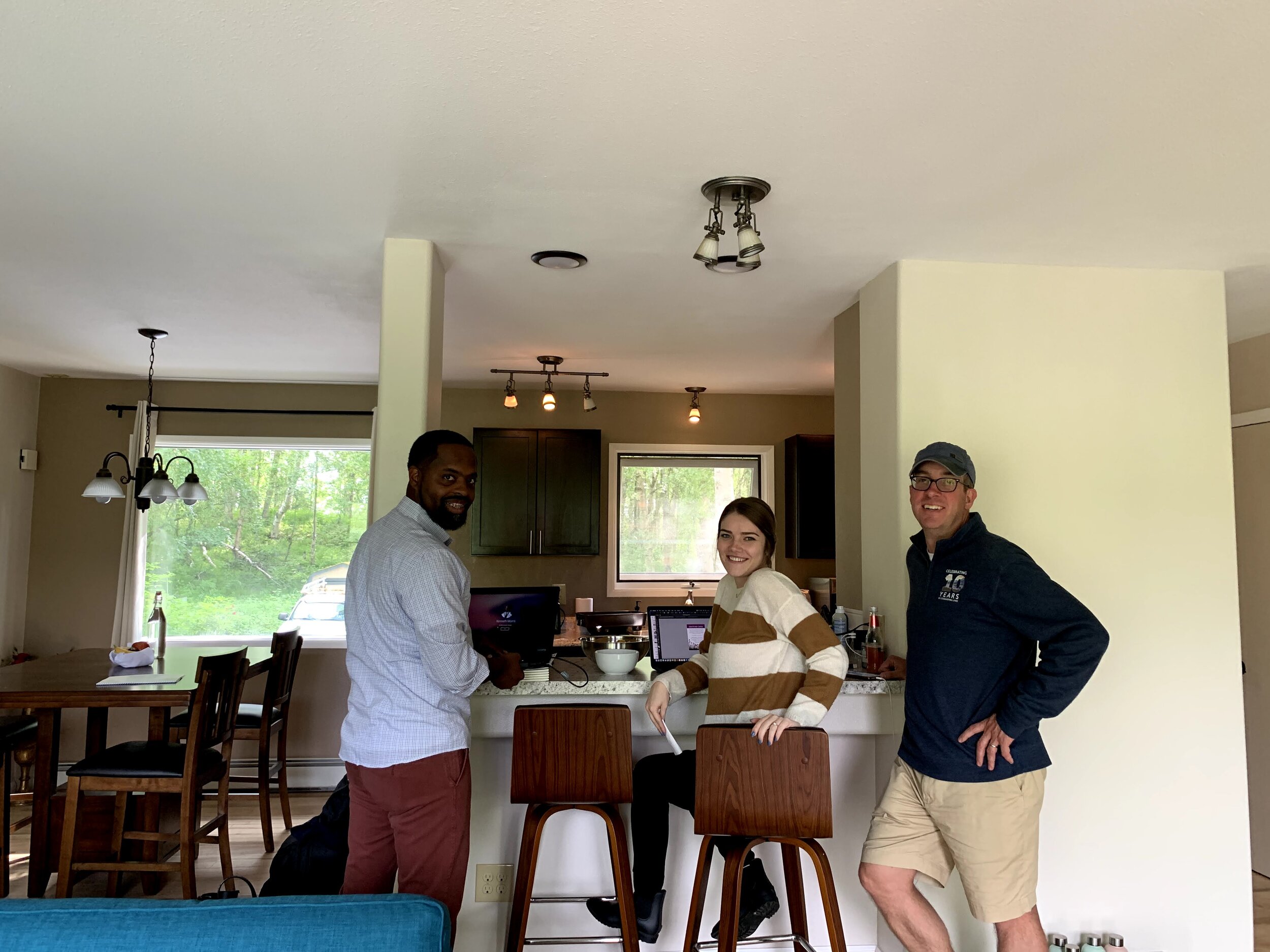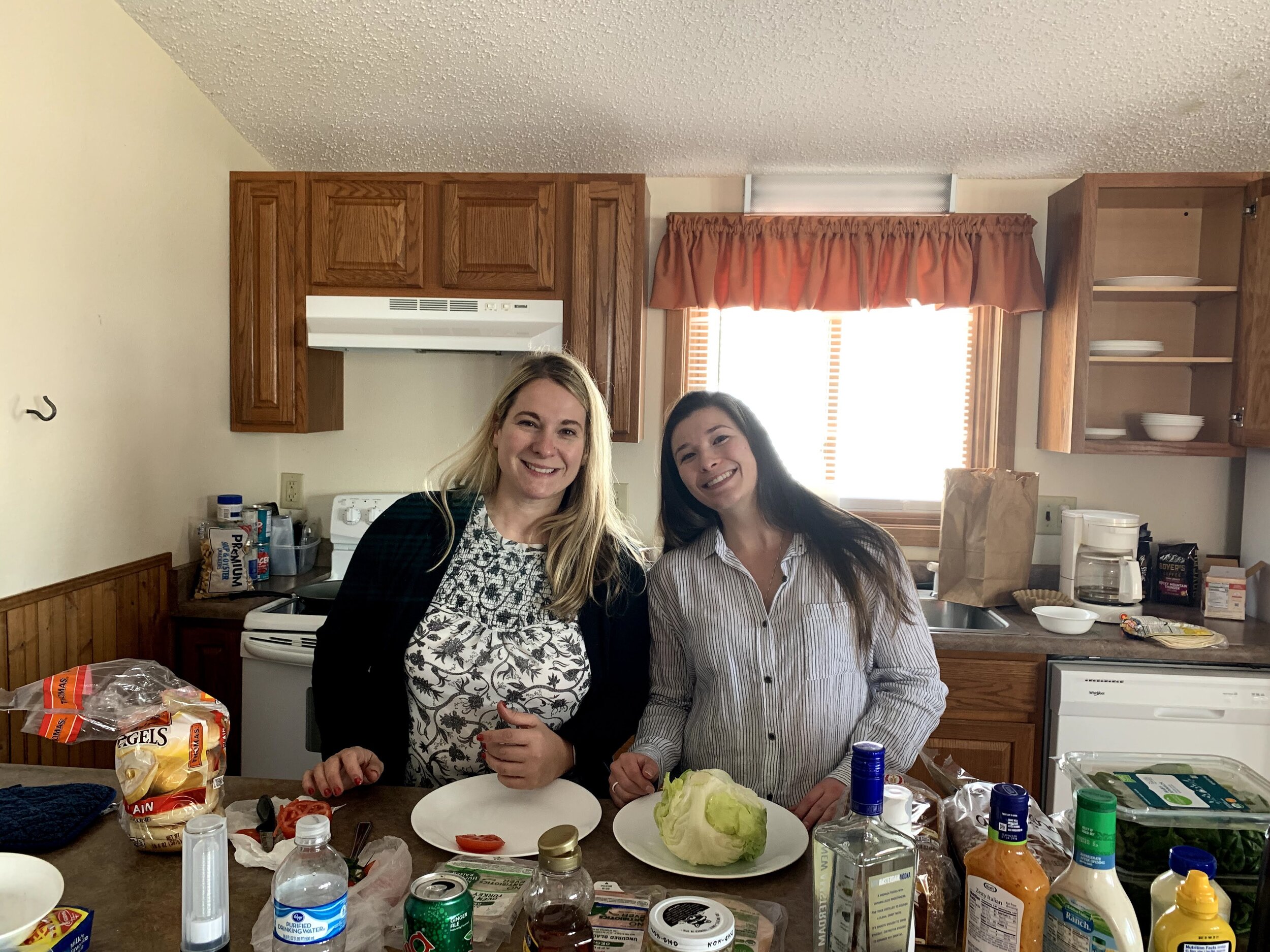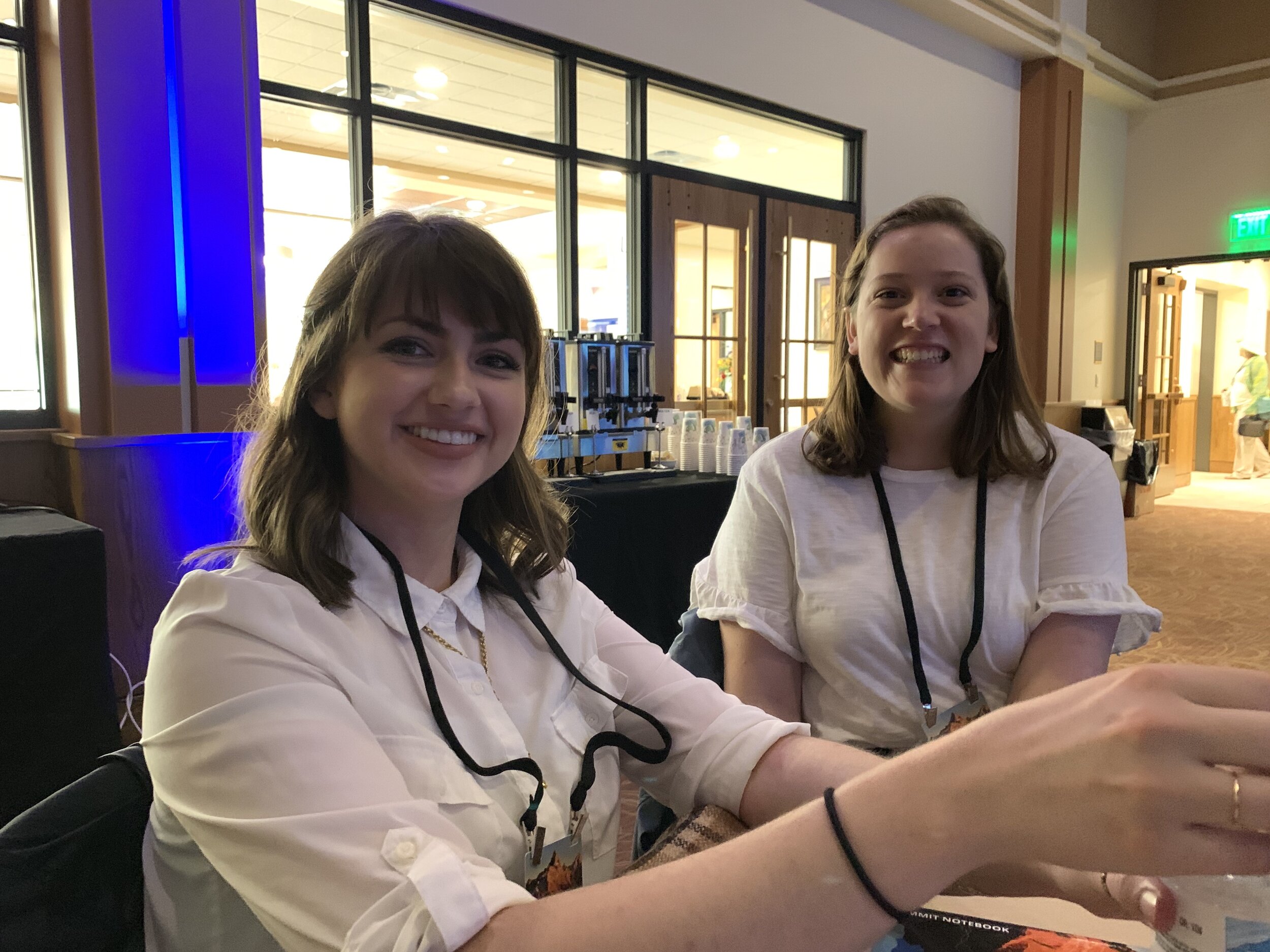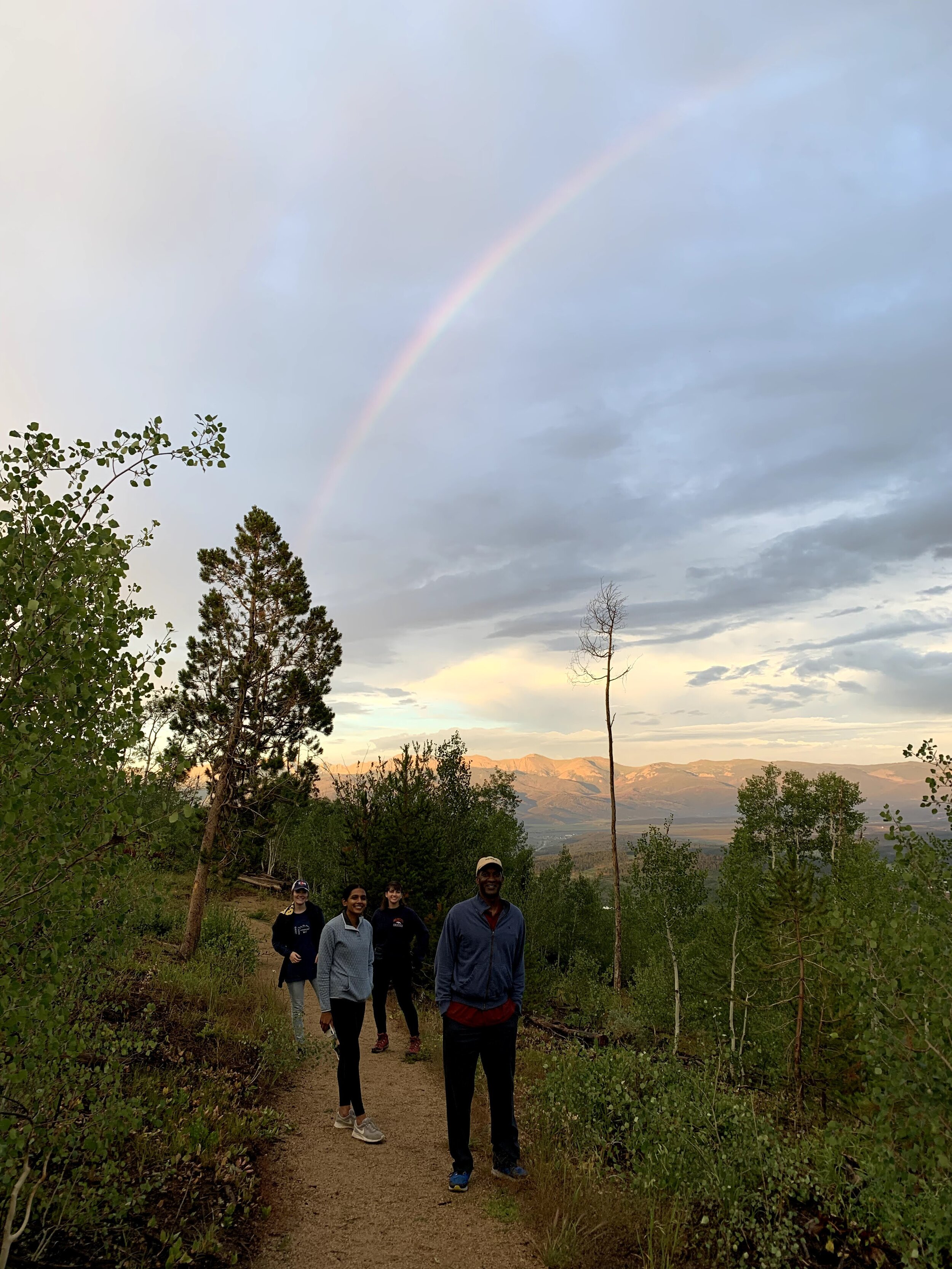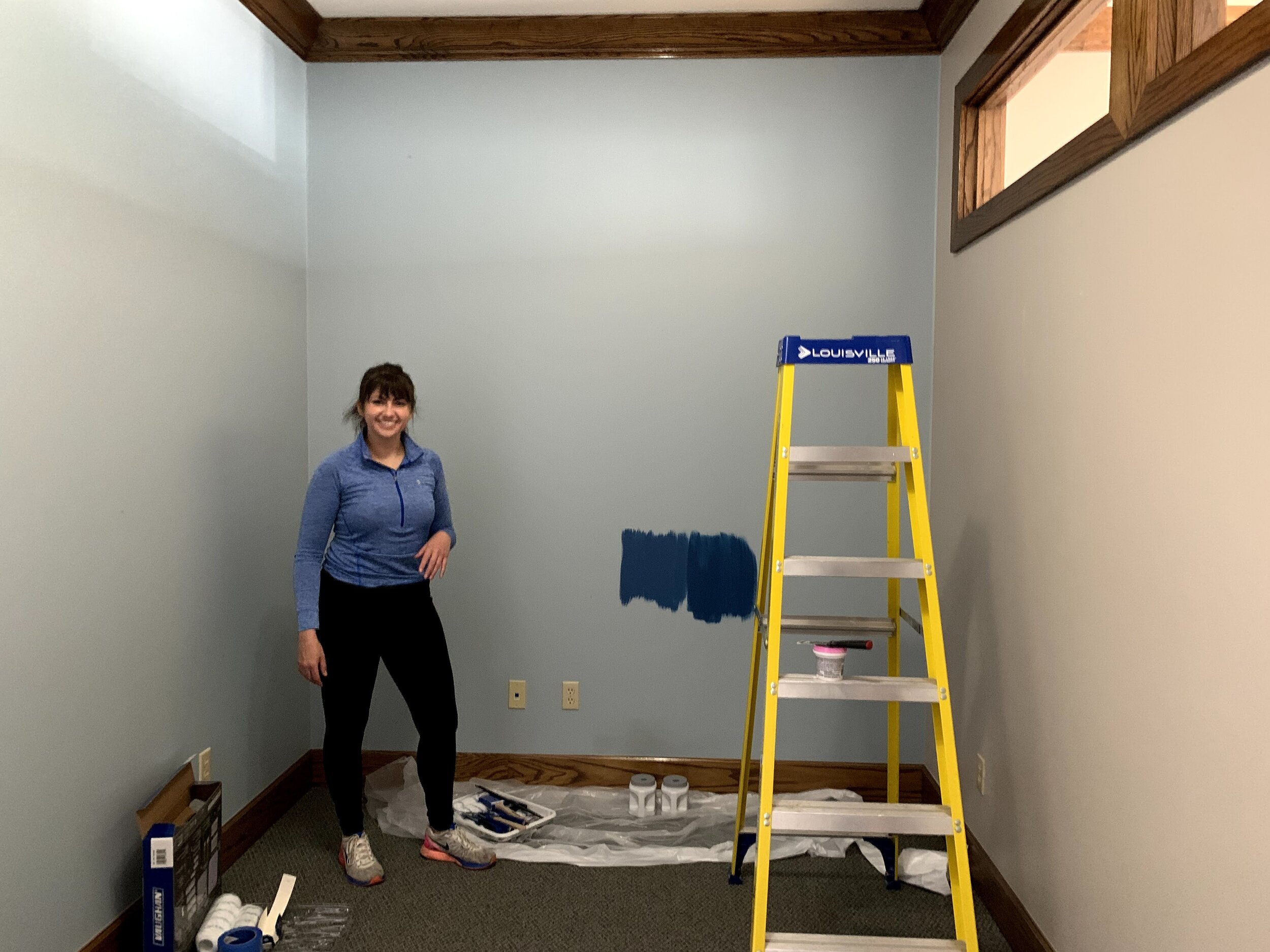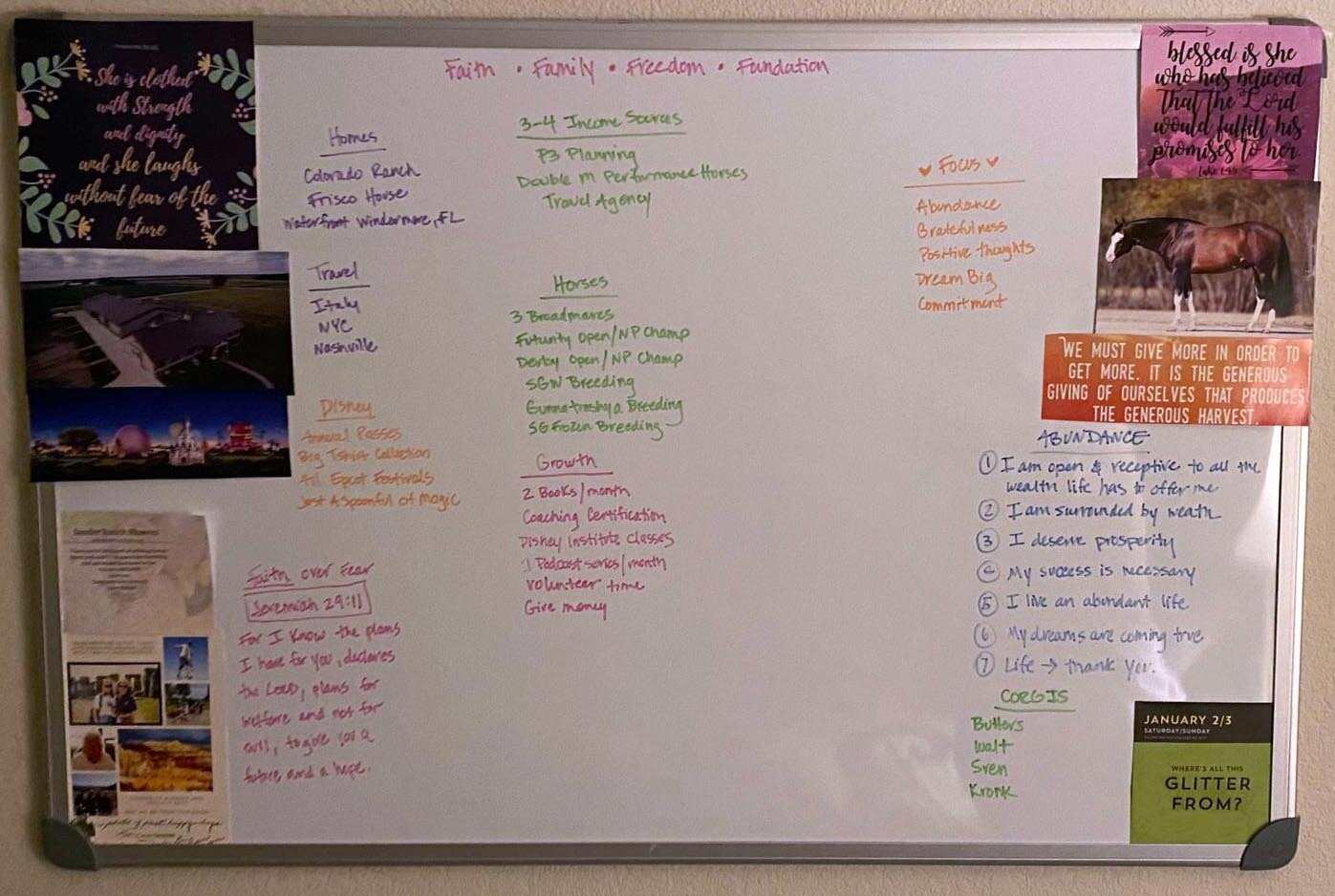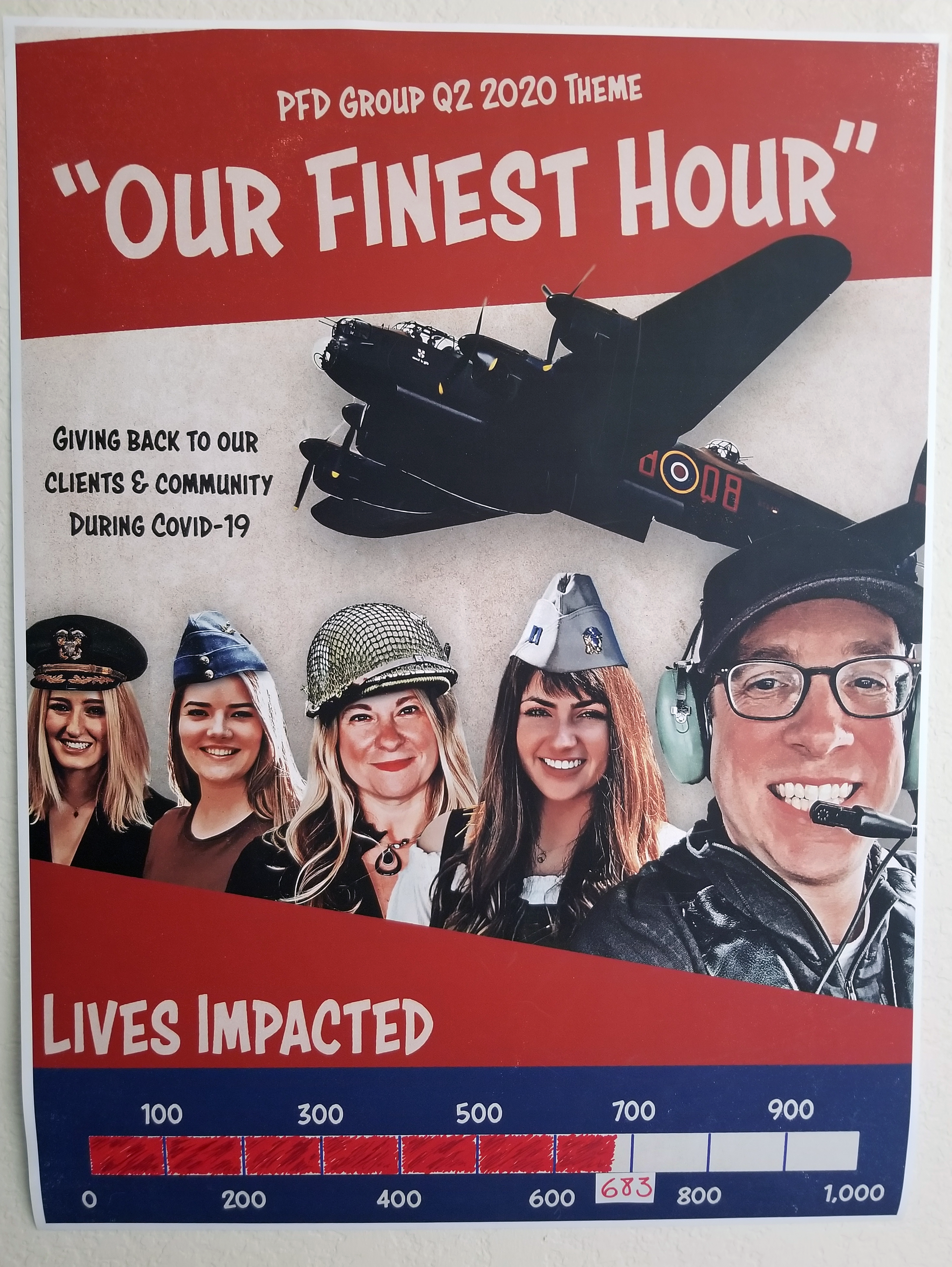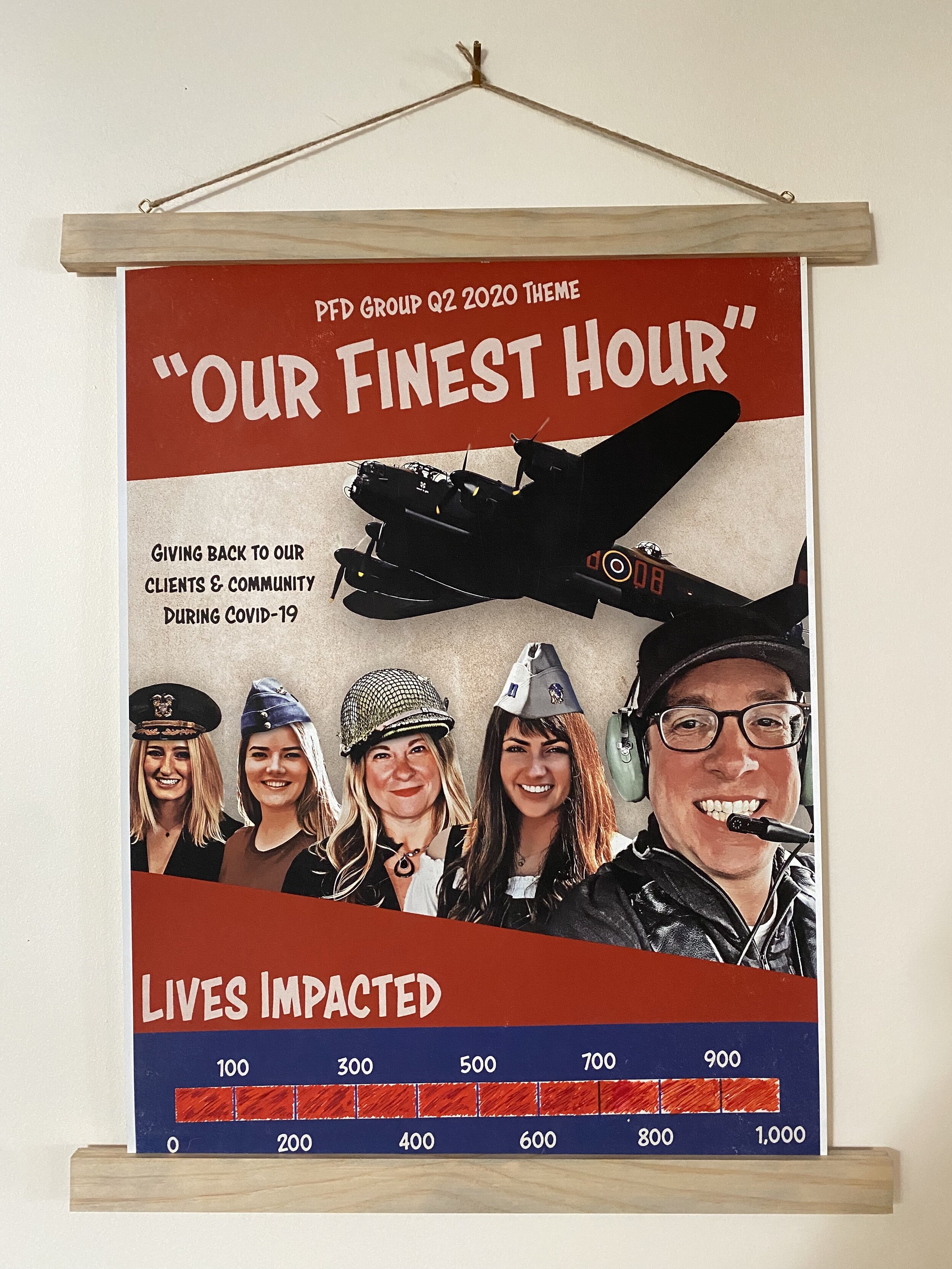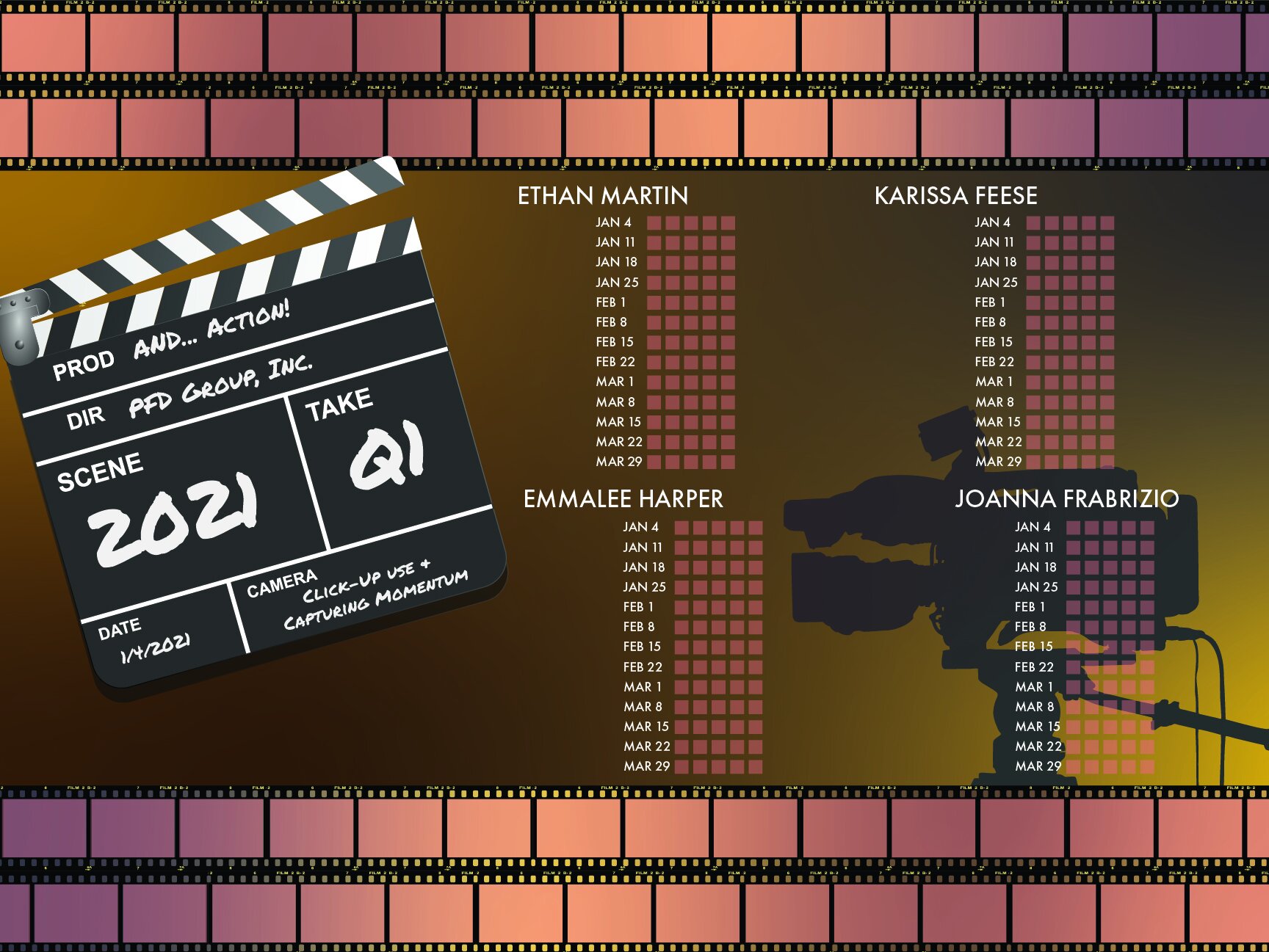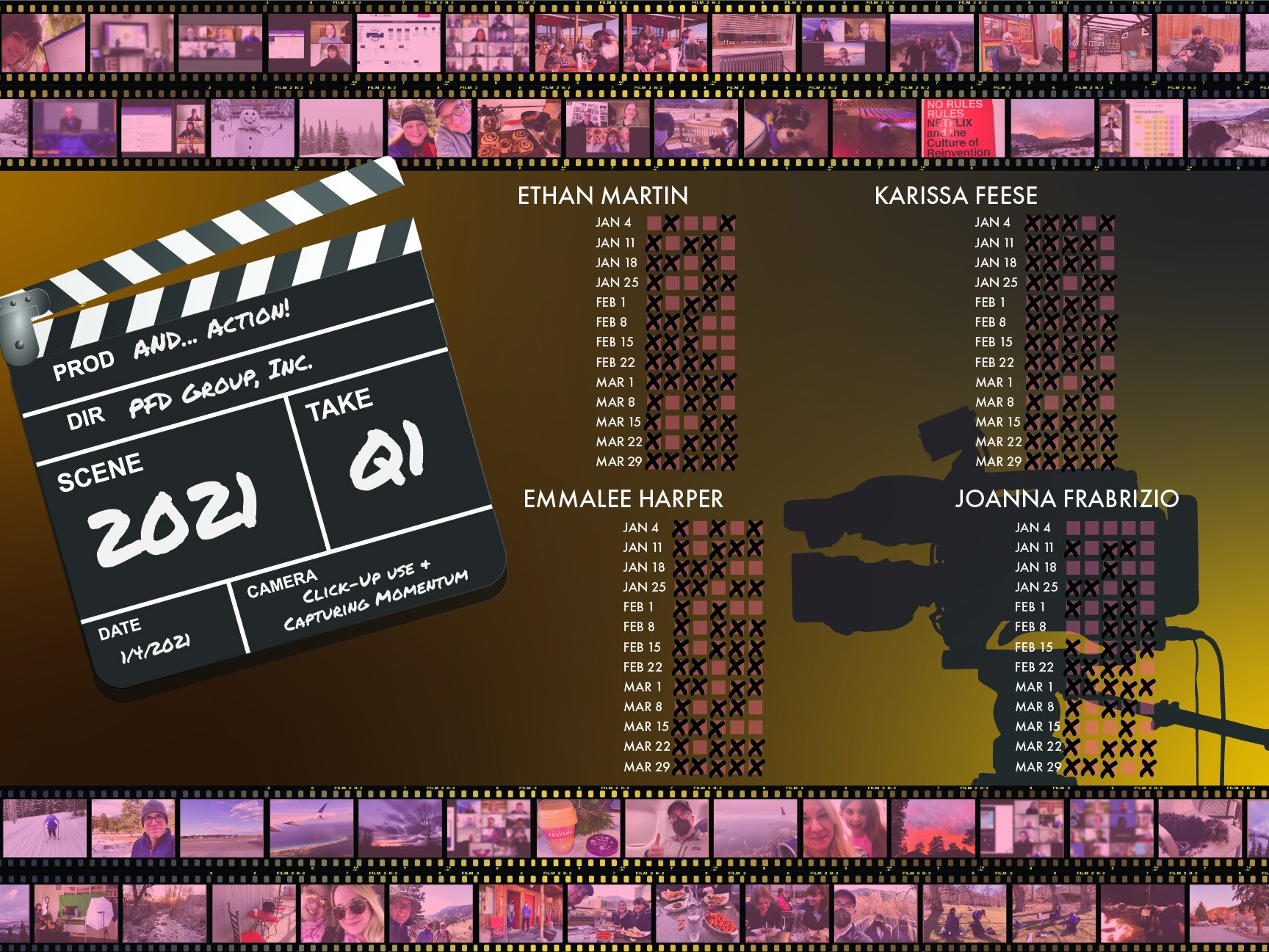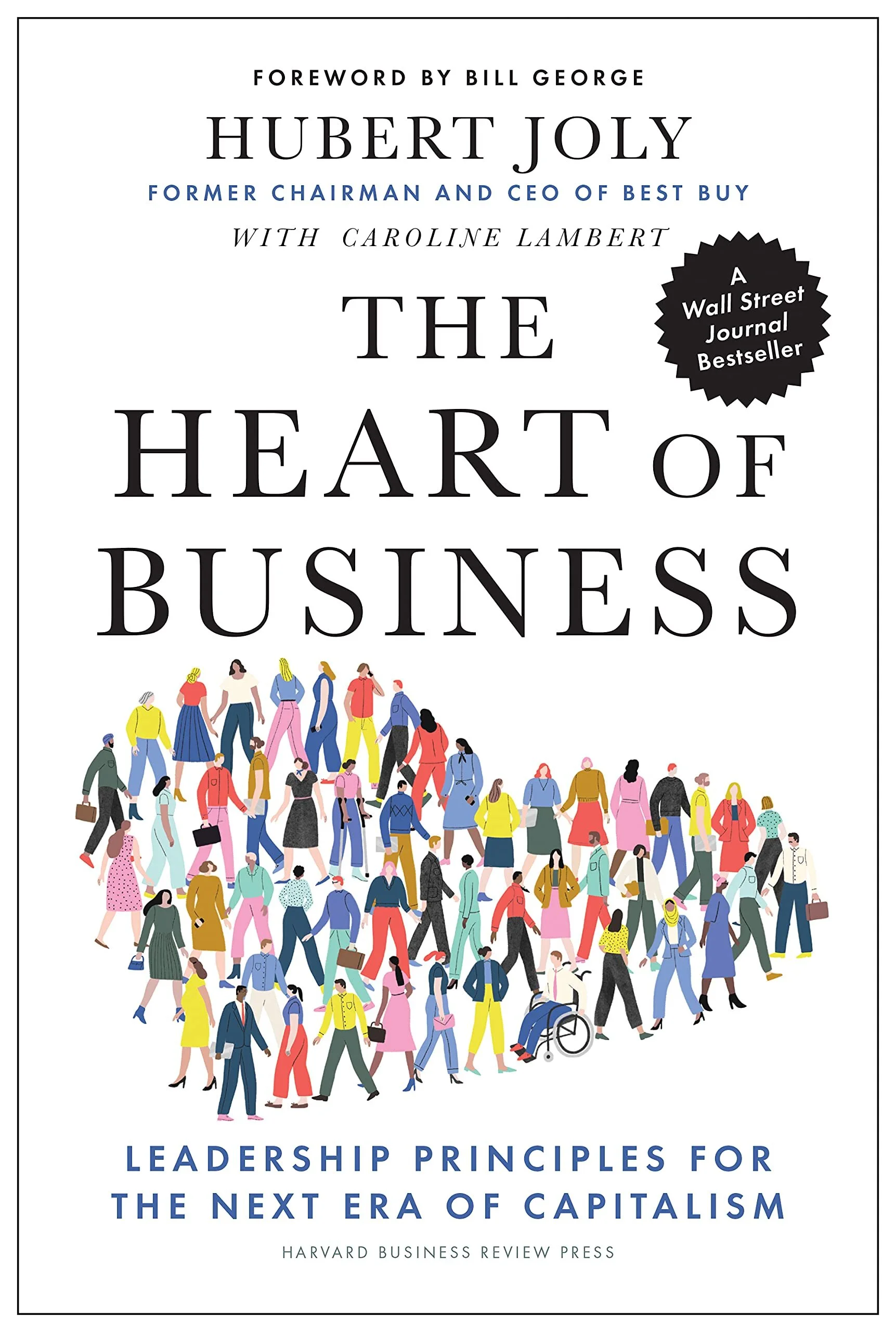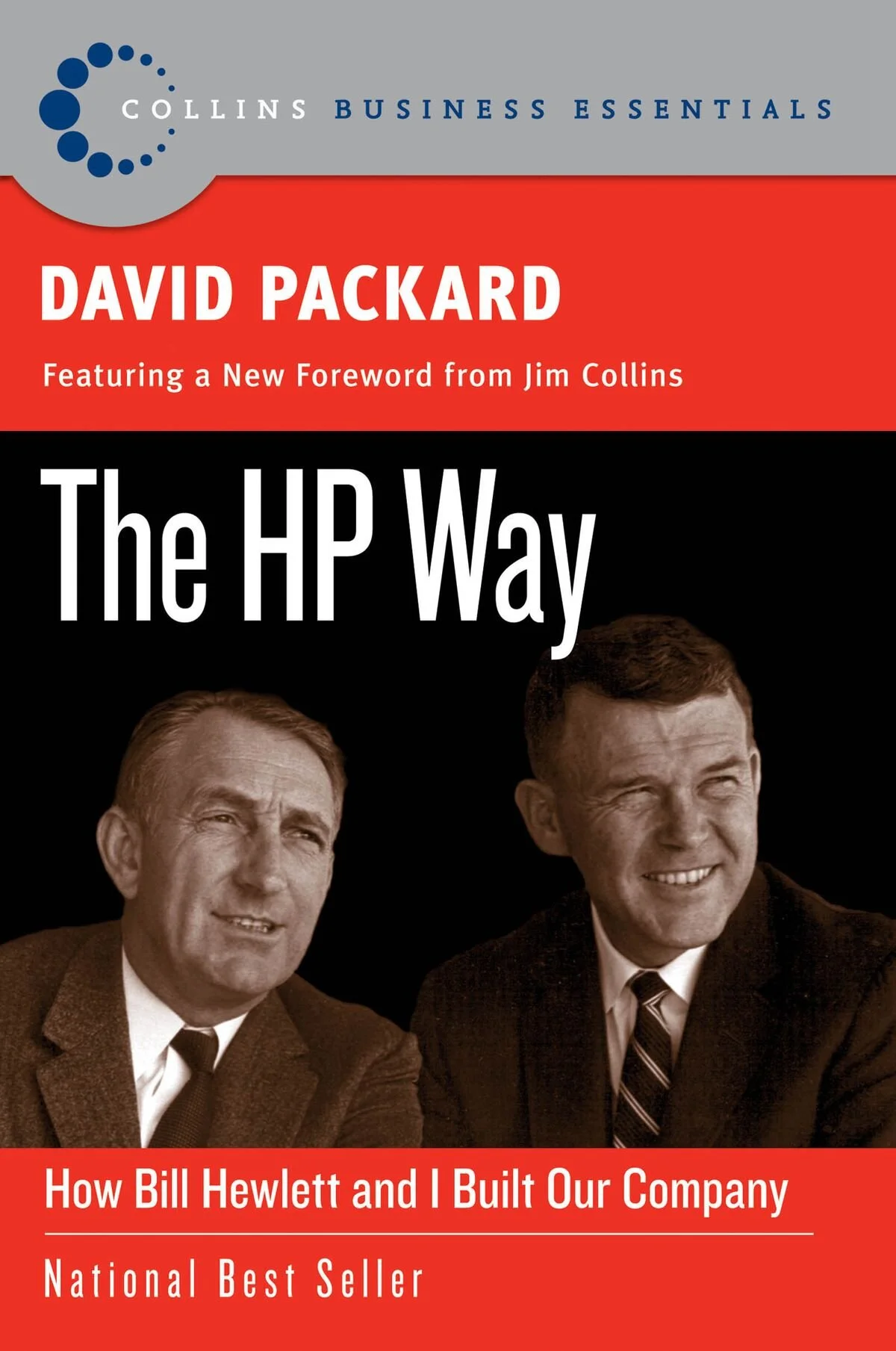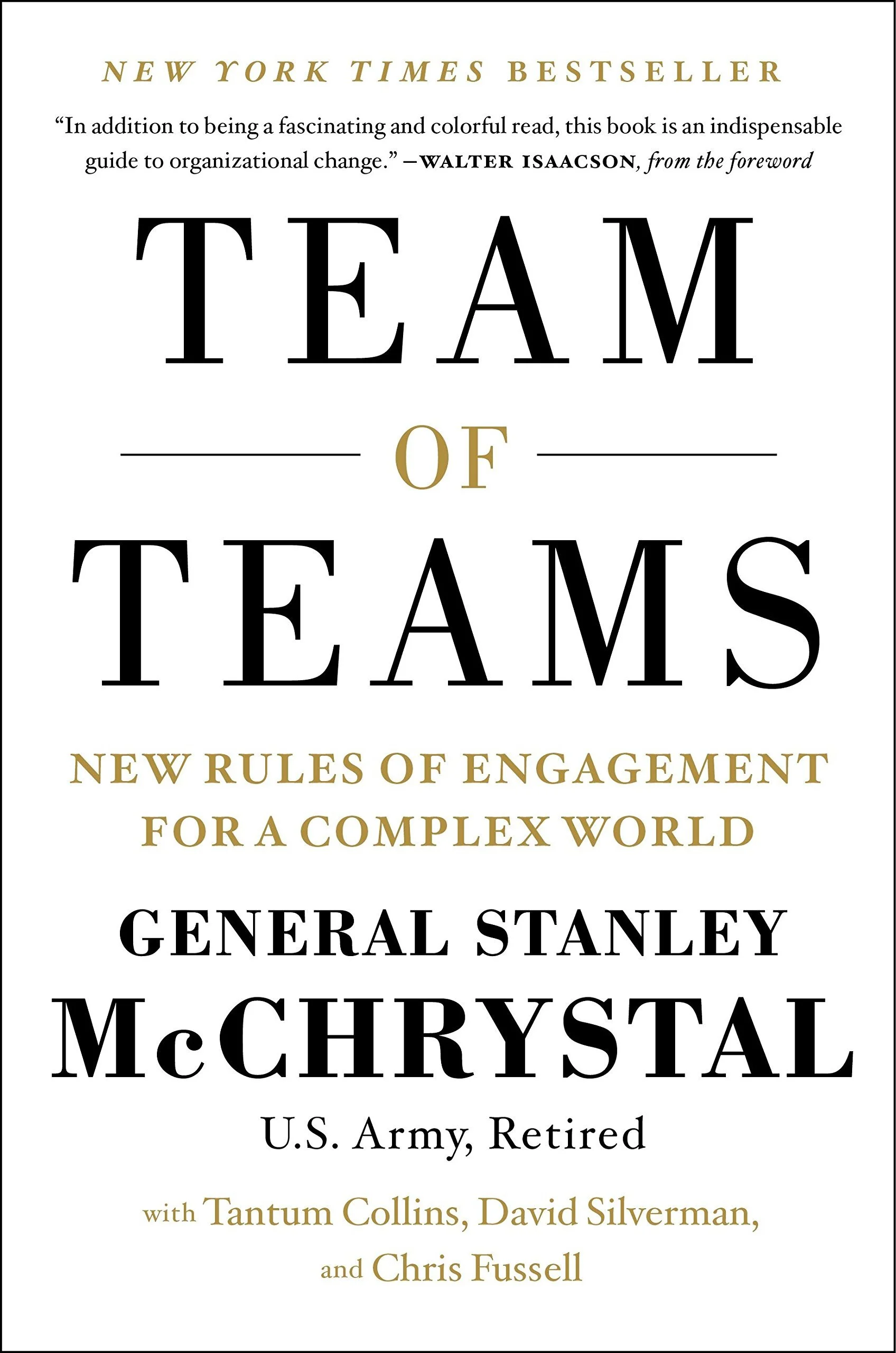As a part of our continued commitment to providing the best resources for leaders to better themselves and thrive, for our October Reading List, we recommend these books: Risk: A User’s Guide - General Stanley McChrystal and Anna Butrico, and We Fed an Island: the True Story of Rebuilding Puerto Rico, One Meal at a Time by José Andrés and Richard Wolffe
Reaching Your Customers in the New Normal: Leveraging Stories to Cut Through Noise.
In many ways Covid-19 launched us into the future. E-commerce was on the rise before the pandemic, and but it really took off in March of last year. By 2024, experts predict that online shopping will account for nearly 22% of all retail purchases in the world, up from 19.5% this year. In a world where your customers can get products and services from anywhere, how do you stand out?
First, we need to get online - on the platforms where our customers are. Second, we need to figure out a communication strategy that makes an impact on the people that matter to our businesses.
At PFD, we recommend making storytelling be a central part of that communication strategy. At first, this may seem a little odd - storytelling in our minds may be reserved for friends over a beer or for around the campfire. This being said, storytelling can be a simple and effective way to connect with others and stand out insourcing customer’s minds. There are many reasons for this, as anthropologists believe that our brains are wired to hold onto stories, but especially in a world with continued uncertainty and noise, we need to meet our customers where they are at. What people need are stories of authenticity, hope, and connection.
Chip and Dan Heath, in their book Made to Stick, outlined the types of stories we need to share as companies if we want to make an impact on our customers into three “plots” - the challenge plot, the connection plot, and the creativity plot. Importantly, these plots do not mean we should make up stories about our company to share with our customers, rather, they outline the types of stories the people in our companies are already doing - we just need to learn to look for it.
The Challenge Plot
The Challenge Plot is a classic story we look for as humans, where we see a person or team face a tremendous challenge and overcome it, like David and Goliath. If you have a successful company, you no doubt have had the challenge plot come up. For example, one of our clients, Evergent, has a good portion of their team located in Hyderabad, India. Unfortunately, this is a place that was heavily impacted by Covid, and so team members and their families faced tremendous challenges as they navigated unthinkable circumstances. The extraordinary resiliency of the team, and the measures Evergent took to help keep the team as safe as possible are truly commendable.
The Connection Plot
The Connection Plot is a story that appeals to the social parts of our brain. It’s fairly self-explanatory - it’s a story about people connecting in meaningful ways. The connection plot is why we like stories of unlikely animal friends, and communities coming together to help each other. For this plot, we can celebrate the true friendships that are formed in our companies and the outreach we are doing to the community. For example, a few years ago, when Nebraska underwent quite a bit o flooding, one of our clients, Hometrends LLC, paired together with the local fire station and donated mattresses for people who lost everything in the flood to sleep on.
The Creativity Plot
The Creativity Plot is a story of ingenuity, where someone or a team creates something new and better for the world. It is the story of MaGyver and of Apple - when we hear it, we are inspired by the cleverness and genius, and we want to be a part of the change. For example, it is the story of one of our clients, Nox Health, that is using technology to radically transform how people sleep, so they are no longer sleep deprived. To use specialized technology for human flourishing through getting better sleep is creativity at its finest.
If we want to cut through the noise and clutter, we have to figure out how to genuinely and authentically share what we are doing in the world with the people who matter to our businesses.
Everyone is hiring. No one can get hired.
It doesn’t add up. Months ago, headlines boasted record number of job openings, and yet, it seems like those who became unemployed in the pandemic are still having a tough time finding jobs. The Bureau of Labor Statistics reported that there are 8.4 milllion workers who are unemployed, but 10.9 million jobs open, and the rate at which people are getting jobs is lower than pre-pandemic. Oftentimes, the job seekers are perfectly employable, hardworking, qualified, and talented people. These people are reporting frustration - if they’re applying to jobs, they’re hearing crickets. If they worked in an industry that was heavily impacted by Covid, they’re hesitant to go back to an industry that gave them so little stability in the midst of extraordinary uncertainty. In this environment, it’s hard to tell which candidates are serious about their applications, and which employers are serious about their postings.
There’s no single party to blame. The bottom line is the job landscape is changing, and it will have a significant impact on our companies we want to find the best talent that will help us scale.
If we want to hire the best talent, we need to figure out a way to cut through the noise.
A couple of tips:
Show your candidates you’re serious.
With the rise in job posting sites like LinkedIn and Indeed - it has never been easier to post a job. Often times, employers will leave that post open indefinitely - either forgetting to take it down when the position has been filled, or they just don’t fill the job. Either way, the outcomes are the same - a pile of resumes stack up in a virtual space - never to be seen by human eyes. In this scenario, the position is not filled, and the candidate is left to wonder if they’re going to hear back from another potential employer. If a candidate didn’t get the job, tell them. If you don’t want to actually find a person to fill the job posting, take it down. If you’re using an AI screening software, be careful - at times, this type of software can screen out good candidates due to a simple discrepancy in keywords. The idea is to act with integrity, and to treat everyone with love and respect - even the ones who won’t be a part of your team. It is okay, and even encouraged, to have a rigorous hiring process - not everyone will get a job at your company. However, to truly stand out, you need to be intentional about how you communicate with the people who want to be on your team.
Try some unconventional and creative recruitment methods.
The best way to cut through the noise and find the best people is to form relationships in your community. Often, the best talent may be in your own backyard, you just need to be strategic to reach it. What community colleges and universities are in your area? Forget the career center, what professors, who have seen the students in action, do you need to become friends with? What nonprofits do you need to be on the board of? Which community events do you need to be on the planning committee? By being active in creating relationships with the right people in your community, you may be surprised who you find. When you find those people, be ready: know your current talent needs, be ready to speak to the roles, and have your business card on you.
Empower your employees.
The best talent knows the best talent. If you communicate to your employees where you are going, and the kind own people you need to get there, they very well may know someone who would be perfect for the job.
Standing out in a market where everyone is hiring, but no one can get a job takes a lot of preparation and follow through. You must be crystal clear on your strategy and talent needs, you need to take the time to form relationships with your community and team members, and you need to have a high level of integrity with your candidates.
It may be a tremendous amount of work, but creating something that is exemplary always is. The return that you will get from finding and hiring the best people will be worth it.
If you would like more tips on how reliably recruit, hire, and retain the best talent, be sure to check out our upcoming book, The Mentorship Engine, available for purchase on November 16.
Scaling your Company by Investing in your People
As a leader, I can confidently say that there is nothing more rewarding than seeing your employees thrive and grow in their roles. Too often the business world pushes the narrative that creating a unique and valuable employee experience is a cursory concern that only large companies have the resources or time to attend to. However, here at PFD, we are big believers in the idea that the culture and environment you create for your employees should be a central part of your business strategy.
After all, companies grow due to the actions and commitment of those who work there. If you are not taking the time to create an environment in which every employee can succeed, then you are actually hurting your business. To create a company in which every employee is set up for success, we recommend that you take time to invest in three areas of your employee’s life:
Ensuring cultural fit: While it is important that your employees be diverse in talent and experience, it is also equally important that each of your employees share a set of workplace values. This means that there is an understanding of what behaviors are expected and that each employee lives by that. What is crucial as a leader is to ensure that you communicate clearly what those values are on a daily basis. This can minimize conflict and create comfort by increasing clarity of expectations.
Providing opportunities for growth: Your employees want your workplace to be a space where they can grow and reach their full potential. To ensure they are able to do this, you should be providing them with timely coaching and resources for learning. For example, at PFD, I make sure to build mentoring relationships with my employees to ensure that they have the support they need to accomplish all their goals.
Environment: Your physical environment is something that can either add to or detract from the mental wellness of your employees. If your physical environment is sterile and dull, it may be difficult for your employees to focus. On the other hand, if there is natural light and greenery in your workplace, your employees may feel more connected to one another and motivated. You don’t need to have a Google-esque office environment, but it should be clean, comfortable, and welcoming.
If you’d like to learn more about each of these three steps and how to fully make mentoring and employee experience a part of your business strategy, I highly recommend that you look into ordering our book The Mentorship Engine when it is released this November. The Mentorship Engine will walk you through a repeatable framework with which you can craft a compelling vision for your company and then source and retain the talent you need to fulfill that vision. If you are at all interested in the idea of growing your people while also growing your company, this will be the book for you. Keep an eye out in the coming weeks for a pre-order link.
Finding Game-Changing Talent with a Creative Sourcing Plan
If there is one thing that I know to be true about business, it is that the people on your senior team and in your company are the deciding factors in whether or not your company can scale effectively. I can not tell you the number of times that one of my clients has brought on a new team member and been absolutely awed by how game-changing that addition became. For example, just recently, one of our clients brought on a new human resources head and was stunned by the positive transformation she generated in the company.
When I tell partners and colleagues about stories such as this, I’m always met with the same question: how exactly can I attract that type of game-changing talent? In the business climate we live in today, attracting top talent can be challenging: now more than ever, individuals have the option to apply to and work for companies all over the world. However, this shouldn’t scare you. With a creative and regimented talent sourcing plan, you too can put your company in a position to attract great talent.
A good creative sourcing plan should leverage three resources: community partnerships, talent recruitment agencies, and being opportunistic:
Community partnerships: Oftentimes amazing talent will be right in your backyard; you just need to know where to look. Community partnerships can be a powerful way to find that talent. Are there local universities, nonprofits organizations or boards that could connect you with potential employees? Once you identify individuals or organizations that may have potential employees, you can begin to build consistent partnerships with them. For example, I used to work closely with a professor at the University of Denver to find interns. This partnership gave me access to students that the professor thought were good fits instead of me trying to go through the school’s career center, which dozens of other companies were doing.
Talent recruitment agencies: Although this isn’t necessarily the most creative, talent recruitment agencies can be helpful. Your time and energy are valuable resources, so if you can afford to spend cash on recruitment agencies, it could be a worthwhile investment.
Being Opportunistic: As a leader, you should always be keeping an eye out for potential talent. What this means is that if you meet someone amazing as you are going through your day-to-day-life, recruit them. You can’t plan to meet people like this, but you should be prepared to. To be prepared, you should be able to communicate your mission, speak to why you provide a valuable experience and have business cards on hand.
These three avenues are each a viable way to find great talent and ones that I have personally used in the past. If you would like to discuss your sourcing plan further, feel free to reach out to me at emartin@pfd-group.com.
The Importance of Personal Life Planning
It’s often easy to ignore your personal life when you begin laying out your quarterly and yearly business goals. It goes without saying that as a leader you are always thinking strategically about your business: you set up benchmarks for success, discuss your goals and plan for the future business that you’d like to grow. While business planning is second nature to many great leaders, personal life planning is often undervalued and ignored.
Personal life planning refers to taking the time to think holistically about your life and set up goals and priorities for each area of your life. Business can be one of those areas, but if you are doing personal life planning, it should not be the only area that you plan around. For example, a significant part of my life is family. When I plan for the future that I am working to build, they are an important aspect of that future. To ensure that I am properly building them into my planning, I have to take time to ask questions such as, “how much time do I want to be spending with my family on a day-to-day basis?” and “what resources do I want to be able to provide my children?”
By asking these questions, I ensure that the work I am doing will help me to build a thriving life and not just a thriving business. Too often, I’ve come across individuals who have built amazing businesses but who, in the process, ignored other aspects of their lives. Personal life planning is a way to ensure that you do not ignore those critical parts of your life.
“You can’t be considered successful in your business life if your home life is in shambles.”
One way to make personal life planning a practice is to create a personal vision for yourself. Above, you will see some images from our team member’s vision boards. If you would like to learn more about vision boarding, and the powerful role it can play in personal life planning, click here.
Another powerful exercise to envision a future that you want to create is to go through what we call the Legacy Vision tool. This tool captures all that you want to be and do on a ten-to-thirty year timeline, and it will ask you to transport yourself into that future and answer questions such as:
Who do you serve with your business? Who do you serve in other areas of your life?
What is your impact? How do you want to be remembered?
How long are you working? How much time do you spend with family and friends? What is your relationship with your family and friends like?
For a complete set of exercises and questions, feel free to download our Legacy Vision Tool. Once you answer the questions and reflect on your future, you will have the information you need to draft a vision for your future. This vision can be one that you create with prose, bullet points or even with diagrams. The point of the vision is to have open space to envision what a thriving life looks like for you.
Quarterly Themes: Creating alignment and Boosting Team Morale
As we have been working in a pandemic for more than a year, there is one thing that all the leaders I have spoken with have agreed upon: we and our teams are exhausted. I am a big believer in optimism, but I am an equally large proponent of addressing what Admiral James Stockdale calls the “brutal facts of your current reality,” and, in this moment, addressing the brutal facts means recognizing that team morale and alignment may be suffering.
One powerful way to re-inspire your team and bring energy (and fun!) back into your workplace is to announce a quarterly theme that you and your team can rally behind. Quarterly themes are generally created by gathering a representative from each department and/or your leadership team for a quick 45 minute meeting.
In the meeting, you and your team should consider where your company is at, upcoming priorities and future goals. The most important thing to remember while creating this team is that it should create a “win x4;” a win for the company, a win for customers, a win for the employees, and a win for the community. By ensuring that your theme is one that will motivate your employees and create value for customers and community, you will effectively be drawing in a crowd of individuals who will support your work.
As an example, this quarter we at PFD have decided that our quarterly theme would be “Paddle!” We wanted to capture the idea that in order to catch a great wave of change, you have to put in significant effort to ensure that the wave does not pass you by. As a company, we have several key thrusts in the works, which led us to choose a theme that will remind us to keep paddling so that we can catch a wave that will generate enormous benefits for our team and community.
Q3 2021 Theme: Paddle! The Key Thrusts have been generalized so as not to give away our strategy.
If you would like more inspiration on potential themes for our company, check out some of our past themes:
Q2 2020 Theme: “Our Finest Hour”. For this theme, we were in the height of uncertainty with the pandemic, and we were searching for empowerment in our team. We found inspiration from another period of history marked with fear and uncertainty, WWII, and specifically Winston’ Churchill’s “This Was Their Finest Hour” speech. It was because of this speech that we decided to rise to the challenge - making that quarter “Our Finest Hour” - and finding creative ways to positively impact 1,000 lives. If you would like to read more about this theme, check out this blog post here.
Q1 2021 Theme: And… Action! For this quarter, we wanted to inspire our team to be very action-oriented, so to accomplish this end, we had our team track their use and adoption of our new project-management software. By ensuring the team used the project management software, they had a clear means to track progress on their projects, thus inspiring action. There also was a celebratory component, as we also had our team members submit photos of the different things they were doing - both within work and outside of work - to commemorate all that been done during the quarter.
Q3 2020 Theme: Partner Pinball (names removed this blog post). For this theme, we wanted our team members to engage with key partners throughout the quarter to help facilitate a strong launch to a project. A star was added next to the name of each partner engaged, to make sure we kept the focus on partners present and at the forefront. The relationships we have with CEOs and other leaders are critical to our success, so we wanted to focus on treating those partners well for the duration of the quarter.
If you would like more help creating your quarterly theme, I recommend this 9-minute video: Developing a Theme for Your Team.
Recommended Reading: August 2021
As a part of our continued commitment to providing the best resources for leaders to better themselves and thrive, for our August Reading List, we recommend these books: The Heart of Business: Leadership Principles for the Next Era of Capitalism by Hubert Joly with Caroline Lambert, The HP Way: How Bill Hewlett and I Built Our Company by David Packard, and Team of Teams: New Rules of Engagement for a Complex World by Gen. Stanley McChrystal, Tantum Collins, David Silverman, and Chris Fussell.
The Heart of Business: Leadership Principles for the Next Era of Capitalism - Hubert Joly with Caroline Lambert
How to unleash "human magic" and achieve improbable results.
Hubert Joly, former CEO of Best Buy and orchestrator of the retailer's spectacular turnaround, unveils his personal playbook for achieving extraordinary outcomes by putting people and purpose at the heart of business.
Back in 2012, "Everyone thought we were going to die," says Joly. Eight years later, Best Buy was transformed as Joly and his team rebuilt the company into one of the nation's favorite employers, vastly increased customer satisfaction, and dramatically grew Best Buy's stock price. Joly and his team also succeeded in making Best Buy a leader in sustainability and innovation.
In The Heart of Business, Joly shares the philosophy behind the resurgence of Best Buy: pursue a noble purpose, put people at the center of the business, create an environment where every employee can blossom, and treat profit as an outcome, not the goal.
This approach is easy to understand, but putting it into practice is not so easy. It requires radically rethinking how we view work, how we define companies, how we motivate, and how we lead. In this book Joly shares memorable stories, lessons, and practical advice, all drawn from his own personal transformation from a hard-charging McKinsey consultant to a leader who believes in human magic.
The Heart of Business is a timely guide for leaders ready to abandon old paradigms and lead with purpose and humanity. It shows how we can reinvent capitalism so that it contributes to a sustainable future.
The HP Way: How Bill Hewlett and I Built Our Company - David Packard
Much more personal than standard corporate histories, David Packard's The HP Way provides insights into managing and motivating people and inspiration for would–be entrepreneurs. This bestselling classic joins the Collins Business Essentials line–up with a new Note from Steve Jobs.
From a one–car–garage company to a multibillion–dollar industry, the rise of Hewlett–Packard is an extraordinary tale of vision, innovation and hard work. Conceived in 1939, Hewlett–Packard earned success not only as a result of its engineering know–how and cutting–edge product ideas, but also because of the unique management style it developed – a way of doing things called 'the HP way'.
Decades before today's creative management trends, Hewlett–Packard invented such strategies as 'walk–around management', 'flextime', and 'quality cycles'. Always sensitive to the needs of its customers and responsive to employee input, Hewlett–Packard earned massive steady growth that far outshone its competitors' vacillating fortunes, even with radically different products from those responsible for its initial boom.
For entrepreneurs and managers alike, the wisdom found in these pages is invaluable if they want their businesses to gain steady growth and consistent success.
Team of Teams: New Rules of Engagement for a Complex World- Gen. Stanley McChrystal, Tantum Collins, David Silverman, & Chris Fussell
The retired four-star general and best-selling author of My Share of the Task shares a powerful new leadership model
Former general Stanley McChrystal held a key position for much of the War on Terror, as head of the Joint Special Operations Command. In Iraq he found that despite the vastly superior resources, manpower, and training of the US military, Al Qaeda had an advantage because of its structure as a loose network of small, independent cells. Those cells wreaked havoc by always staying one step ahead, sharing knowledge with each other via high-tech communications.
To defeat such an agile enemy, JSOC had to change its focus from efficiency to adaptability. McChrystal led the transformation of his forces into a network that combined robust centralized communication ("shared consciousness") with decentralized managerial authority ("empowered execution").
Now he shows not only how the military made that transition but also how similar shifts are possible in all kinds of organizations, from large companies to startups to charities to government agencies. In a world of rapid change, the best organizations think and act like a team of teams, embracing small groups that combine the freedom to experiment with a relentless drive to share what they've learned.
McChrystal and his colleagues explain their process for helping organizations embrace this model. They also share fascinating research and examples from settings as diverse as emergency rooms and NASA's mission control center.
The Market Advantage of Authenticity in Purpose
As business owners, we know it is quite disappointing when companies with promise prove themselves to be untrustworthy. We know the feeling – opening up our news apps to see a front-page headline of a company with great potential get caught up in a scandal. The large , public scandals, combined with mass layoffs in the pandemic, have created a more hesitant and market that is more distrustful of the business landscape overall.
A photo of PFD team members, and key partners, enjoying a hike in Colorado
How does your company stand out in such a market? Authenticity in purpose. Find out how you want to serve the community, authentically and wholeheartedly pursue that mission, and consider all stakeholders in decisions. Consider this quote:
“The idea has been that corporations exist to maximize shareholder value, but corporations are starting to realize that if you only focus on [financial returns], you create resistance for your growth, and that diminishes shareholder value over the long run. A smarter strategy is one that creates wealth by benefiting other stakeholders. When your growth is good for the community, employees, customers, government, the country, environment, the world, and thereby good for shareholders, that is the ultimate strategy, because everybody wants you to win.”
Genuinely investing in a purpose and mission, and authentically serving others, is a way you can build trust and loyalty with customers. However, cultivating authenticity is not easy – it takes real, disciplined work and intentional thought.
To cultivate authenticity in your business, you will need to:
Decide what’s most important to you.
While the needs of all stakeholders should be taken into consideration, every business can focus on a specific core purpose and cause. For example, while every business can take strides to reduce their carbon footprint, and source ecofriendly products, Patagonia has taken environmental conservation to heart, making their activism and ecofriendly practices a central part of their day-to-day operations. Conversely, another wonderful company, Capital III, leverages their portfolio companies to transform the lives of prisoners – employing them with good jobs, conducting leadership and skills training, and helping to ensure successful reentry. Both companies excel in their respective missions – contributing positively to the world that we live in. To help you understand where you want your business to make the most impact, check out our Legacy Vision tool.
Create accountability.
The next step in cultivating authenticity is to create systems of accountability, both in your personal leadership development and in your business.
Accountability in Personal Leadership Development.
The most effective way to cultivate accountability in personal leadership development is to get yourself into a peer group of similar business leaders. This peer group (also called a cohort or mastermind group) should consist of people who share the same experiences to mentor one another. These people should have similar goals of service as you, who will support you in your challenges, and who keep you in check to your moral obligations. They are the people who will candidly share their experiences and wisdom, to not only help you learn quicker, but also give input to make more holistic well-rounded decisions.
Invite relevant stakeholders to the table for decision making.
In creating systems of accountability for your business, it is important that you give the people that are impacted by your decisions a chance to voice their opinion. For example, Monty Moran, when he was Co-CEO of Chipotle, made it a priority to visit as many restaurant locations as possible, talk to the workers there, and from that develop his priorities. With consideration of his employees, Monty then developed a managerial pipeline, creating better opportunities for employees to advance with Chipotle. This simple act of having real, authentic conversations about the needs of employees, and following through with programs to benefit them, creates a level of trust and shows authenticity in caring.
Own up to past mistakes and learn from them
Companies are run by humans. As such, no leadership team will produce 100% perfect decisions. Perhaps, before the Covid-19 pandemic, your team was pursuing an aggressive investment strategy, reducing your cash on hand, so when the recession hit you had to terminate the employment of some people. If your company really cares about your employees, and you found yourself in this situation, let the employees impacted know that you recognize your mistake, and that you apologize for the way that mistake affected them. Then, you could put genuine effort into helping them in finding a new position. Chances are that the candor with which you approach this situation will soften the frustration and hurt the employee may feel. In the future then, you could potentially learn to make sure to have more cash on hand to mitigate risk, or not overextend on payroll. While we will inevitably make mistakes, it is important that we learn from them and strive to be better in the future.
With these three considerations, we can strive to create better, more authentic businesses that our customers, communities, and employees can trust.
In Your Corner: Cultivating Leadership Growth with Others
The phrase “It’s lonely at the top” rings painfully true for some of us business leaders. If you are a CEO, you have likely experienced isolation that tends to come with the job. As a CEO, you are responsible for the livelihoods of the people in your entire organization, as well as their families, and your own family. That’s a lot of pressure. Further, if you are not careful, you also might be subject to an echo chamber of your senior leadership team only corroborating your ideas (rather than coming up with novel strategies to reach your goals) – leaving you to solely do the creative work. The point: as CEOs, we can become very isolated and stressed, very quickly. What we need is to develop a network of people around us – people who are in our corner – to confide in, garner creative ideas, invest in, and ultimately give us the confidence and clarity to make decisions in our business.
A good guide for developing such a network is the “Three Cs”: Coach, Cohort, and Community.
The first kind of key relationship in the network you cultivate should be a strategic coach. While we are a biased source with this recommendation, we have seen first-hand the transformation a coach can have on your organization. With professional sports, we would never expect our favorite teams to win games without a good coach. A great coach, like John Wooden, can propel teams to extraordinary success. Such is true with business professionals as professional athletes – a great business coach can act as a trusted guide to propel you to higher levels of success. They can be your confidant, helping to address your challenges by providing an impartial perspective. Further, coaches can bring a deep knowledge of proven tools and execution rhythms as well as reduce stress by helping you to cultivate simplicity in your business.
The second kind of key relationships that we recommend you cultivate is a cohort. For reference, a cohort is a group of people who share the same experiences to mentor one another. They are the people in your corner – who know your experiences (also CEOs), who have a similar mission to you, who will support you in your challenges, and who keep you in check to your moral obligations. They are the people who will share with you openly, so you can learn from them to reach your goals more quickly. In these cohorts, everyone is mutually invested in each other’s growth, and it is a place to gain wisdom and insight from your peers. Modern Psychology and Sociology backs the benefits of these sorts of relationships – terming them “strong ties” – nurturing ourselves and our ability as leaders. Many CEOs participate in cohorts already, calling them mastermind groups.
The third kind of key relationships that we recommend you cultivate is a community. In the context in which we are speaking, a community encapsulates the broader reach into the world that you have – the acquaintances in your network from all over. These connections, per a Sociological and Psychological framework, are termed “weak ties”, and they are valuable because they give you broad access to people and resources that can help you further your mission (and you can do the same for them as well). Essentially, these are the people in your rolodex. These are the people that will welcome you into their neighborhoods, partner with you with their organizations and associations, and create mutually beneficial relationships that allows your impact to have a far reach. These are the people to call upon to source talent, strike deals, and organize philanthropic efforts. With a strong community, you will never have a shortage of people to call upon to solve problems and strategize a better shared future.
With a coach, a cohort, and a community, you will have both the strong personal connections that foster growth, and the access to broader networks (with people and resources) that make your impact possible.
